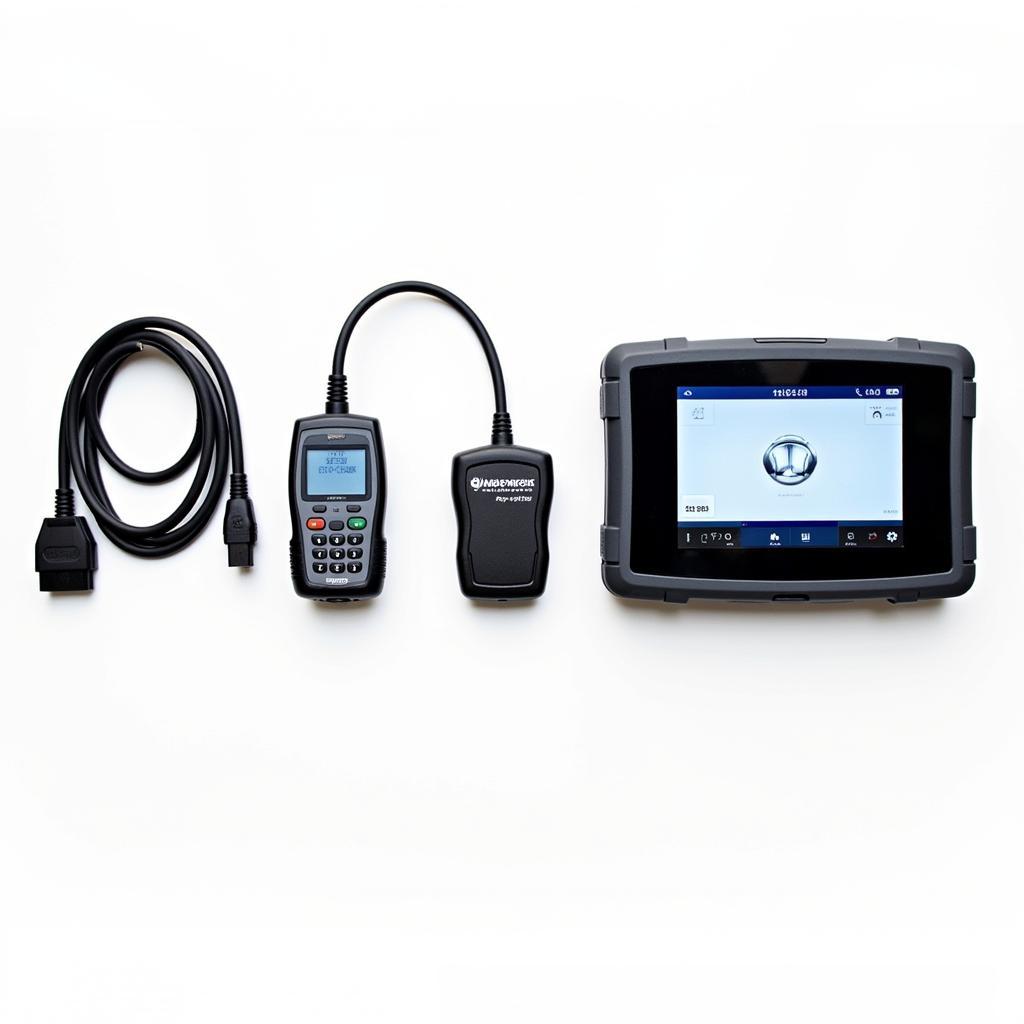Car diagnostic scanners have become increasingly popular among car enthusiasts and everyday drivers alike. The promise of demystifying those blinking dashboard lights and potentially saving a trip to the mechanic is alluring. But are car diagnostic scanners easy to use for someone with little to no experience? The answer, like most things automotive, is: it depends.
Let’s break down the world of car diagnostic scanners and see how user-friendly they are for the novice mechanic.
Understanding the Basics: What Does a Car Diagnostic Scanner Do?
At its core, a car diagnostic scanner acts as a translator between your car’s computer and you. Modern vehicles are packed with electronic control units (ECUs) that monitor various systems. When a problem arises, the ECU logs a Diagnostic Trouble Code (DTC) or what most people refer to as “check engine” codes.
A car diagnostic scanner retrieves these codes, displaying them in an understandable format. This information can provide valuable insights into the potential source of the problem.
Types of Car Diagnostic Scanners: From Basic to Professional
Car diagnostic scanners come in a range of complexities and price points, broadly categorized into:
- Basic OBD2 Scanners: These entry-level scanners are often compact and affordable. They can read and clear basic engine-related DTCs. Perfect for identifying why the check engine light is on and for simple DIY troubleshooting.
- Mid-Range Scanners: These scanners offer more advanced features like viewing live data streams from various sensors, accessing manufacturer-specific codes, and performing some bi-directional control tests.
- Professional-Grade Scanners: Used by mechanics and experienced DIYers, these scanners provide comprehensive diagnostic capabilities, including advanced programming functions, access to multiple vehicle systems beyond the engine, and detailed troubleshooting guides.
 Types of Car Diagnostic Scanners
Types of Car Diagnostic Scanners
For a novice, a basic OBD2 scanner or a good mid-range option is a great starting point.
How Easy are Basic Scanners to Use?
Most basic OBD2 scanners are surprisingly intuitive, even for beginners. Here’s a simplified look at how they work:
- Locate the OBD2 Port: This standardized port is usually located under the driver’s side dashboard, near the steering column.
- Connect the Scanner: Plug the scanner into the OBD2 port.
- Turn the Ignition On: Turn the key to the “on” position but don’t start the engine.
- Read the Codes: The scanner will automatically communicate with the car’s computer and display any stored DTCs.
- Look Up the Code: Use the scanner’s manual or an online database to decipher the meaning of the code.
- Clear the Codes: After addressing the issue, use the scanner to clear the code and turn off the check engine light.
Challenges Novices Might Face
While basic scanners are relatively straightforward, some challenges might arise:
- Understanding Technical Jargon: DTCs are often presented as alphanumeric codes (e.g., P0301, U0100) that can be confusing without a reference guide.
- Misinterpreting Codes: A single DTC might have multiple potential causes. Further diagnosis and investigation might be required.
- Compatibility Issues: While most cars after 1996 adhere to the OBD2 standard, some older vehicles or specific models might require specialized scanners.
Choosing the Right Scanner for You
The best car diagnostic scanner for a novice is one that balances functionality with user-friendliness. Here are key factors to consider:
- Ease of Use: Look for scanners with clear, easy-to-navigate menus and intuitive interfaces.
- Code Definitions: Opt for scanners that provide on-screen code definitions or come bundled with comprehensive reference materials.
- Vehicle Compatibility: Ensure the scanner supports your vehicle’s make, model, and year.
- Additional Features: Features like live data viewing, graphing capabilities, and multilingual support can be beneficial.
Expert Insight: “Don’t be afraid to start with a basic OBD2 scanner,” says automotive expert, John Smith. “The key is to find a reliable scanner with clear instructions and a user-friendly interface. You’ll be surprised by how much you can learn about your car.”
Conclusion
So, are car diagnostic scanners easy to use for a novice? Absolutely, especially the more basic models. While they might not turn you into a master mechanic overnight, they offer an accessible entry point into the world of car diagnostics. By understanding the basics and choosing the right scanner, you can empower yourself to take control of your car’s health and potentially save on costly repairs.
Want to explore your options? Check out our recommendations for the best car diagnostic tool for phone and the highly-rated OBD2 reader NEXPeak NX301 Universal OBDII Car Diagnostic Scanner. We also have resources for specific vehicle models, like our guide to the best car diagnostics kits for Ford Focus.

Leave a Reply